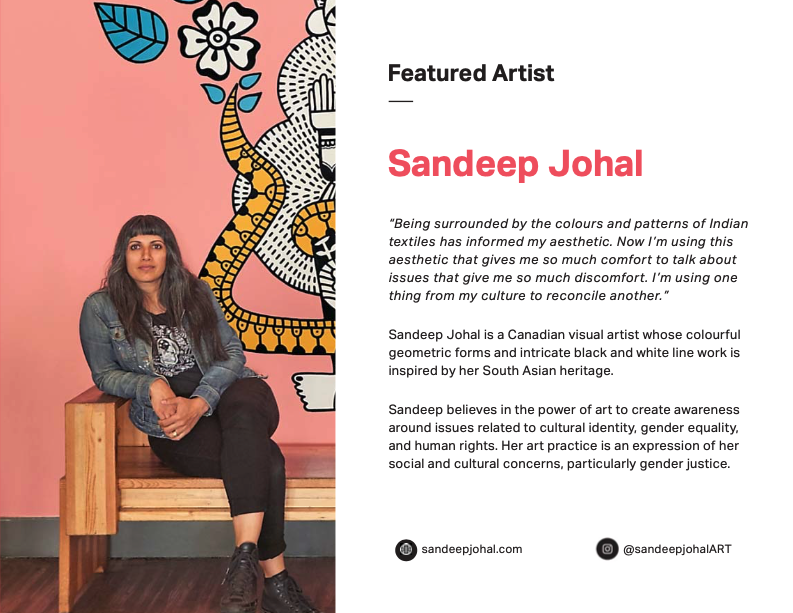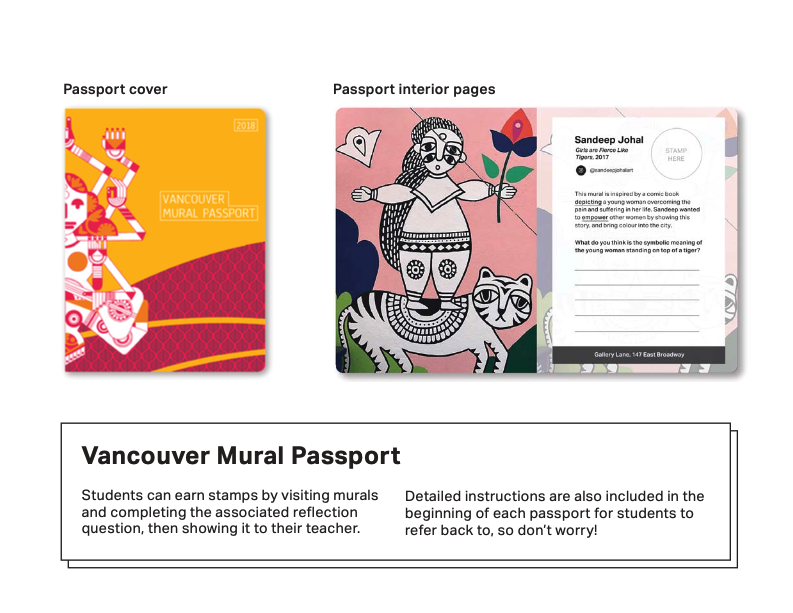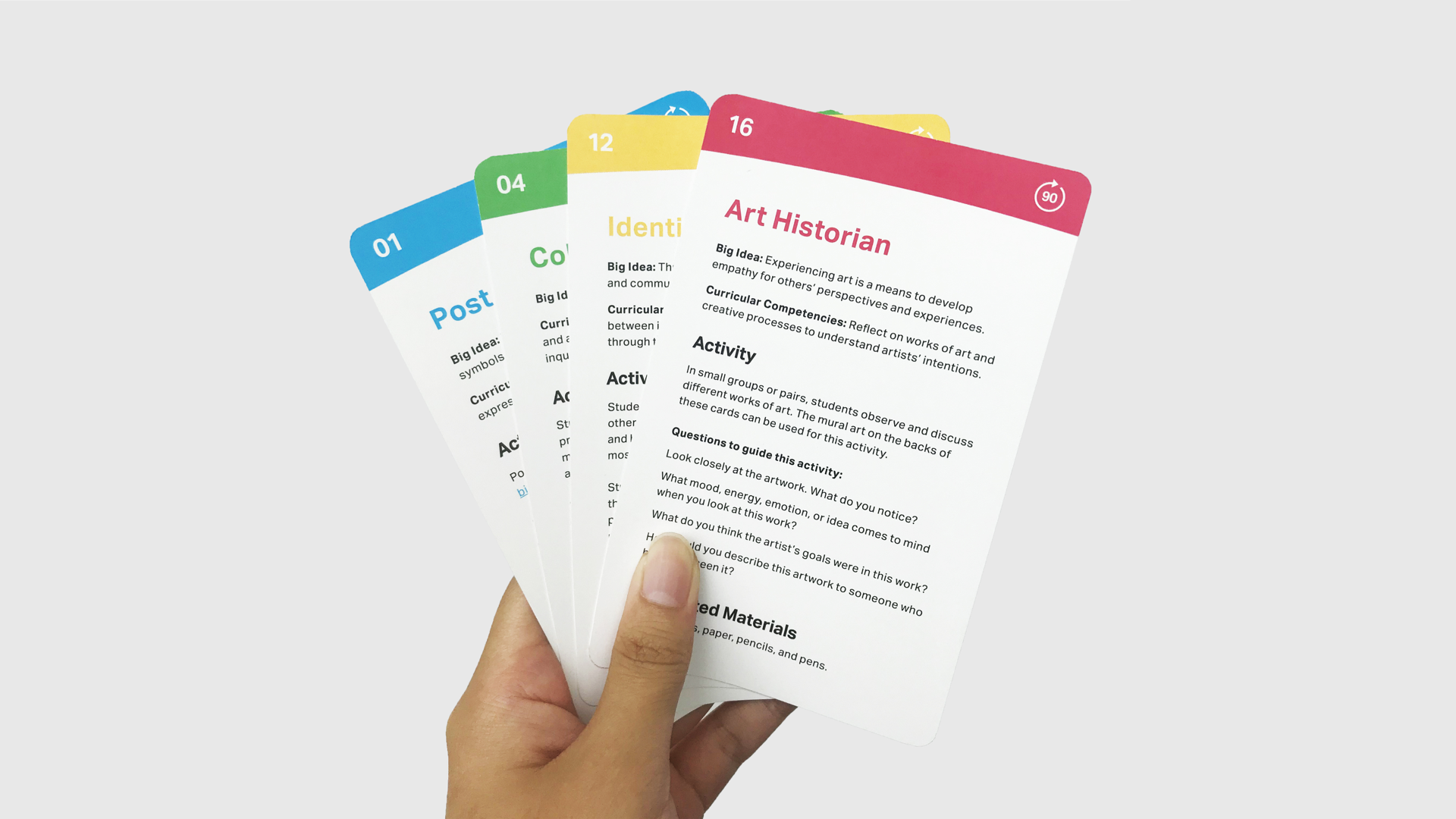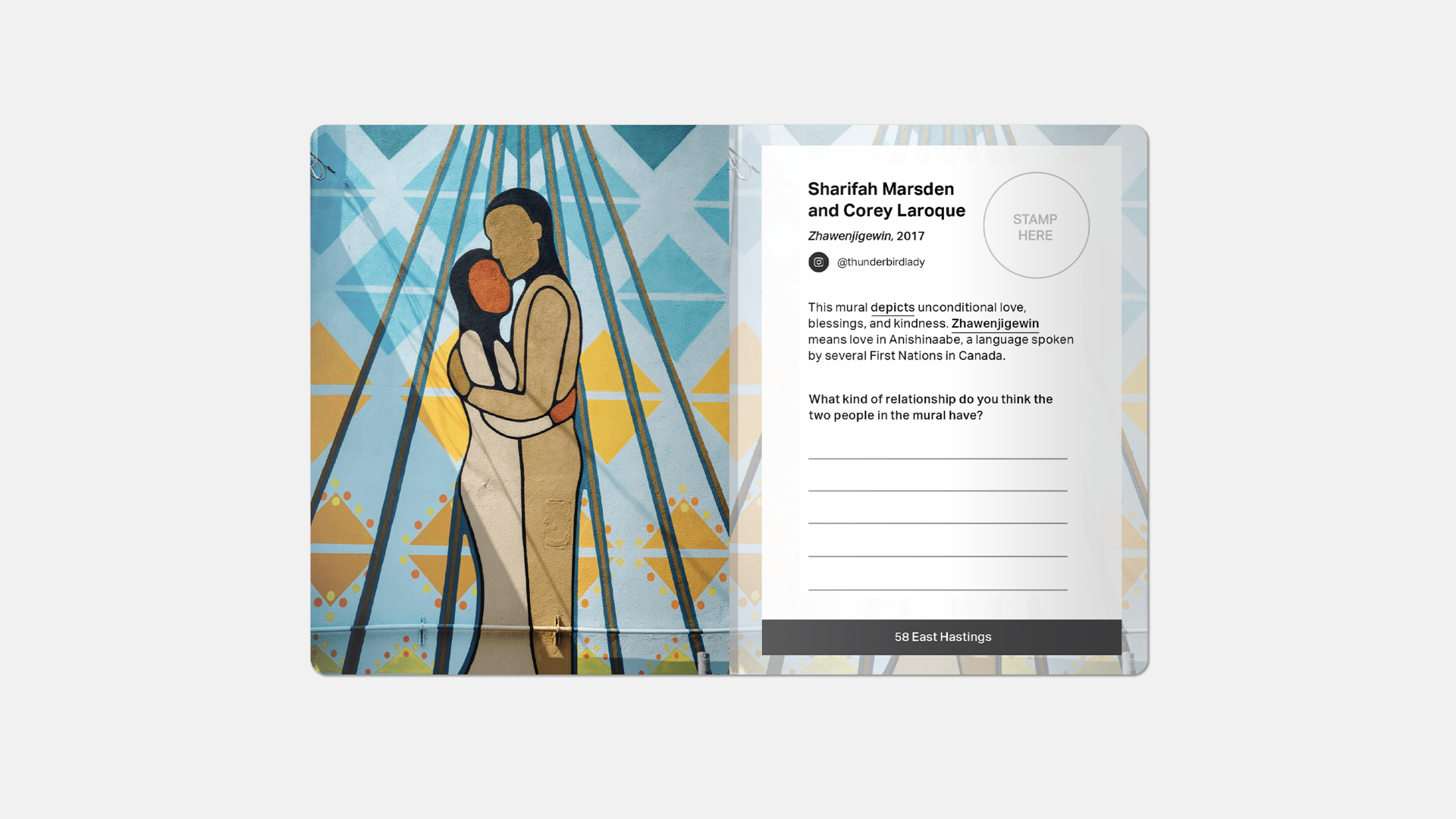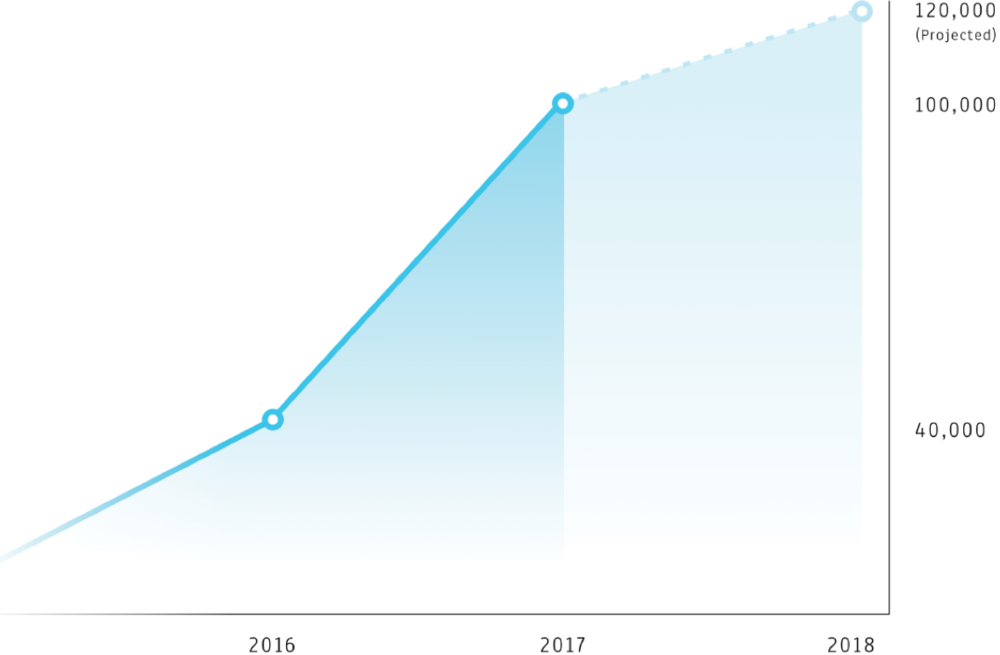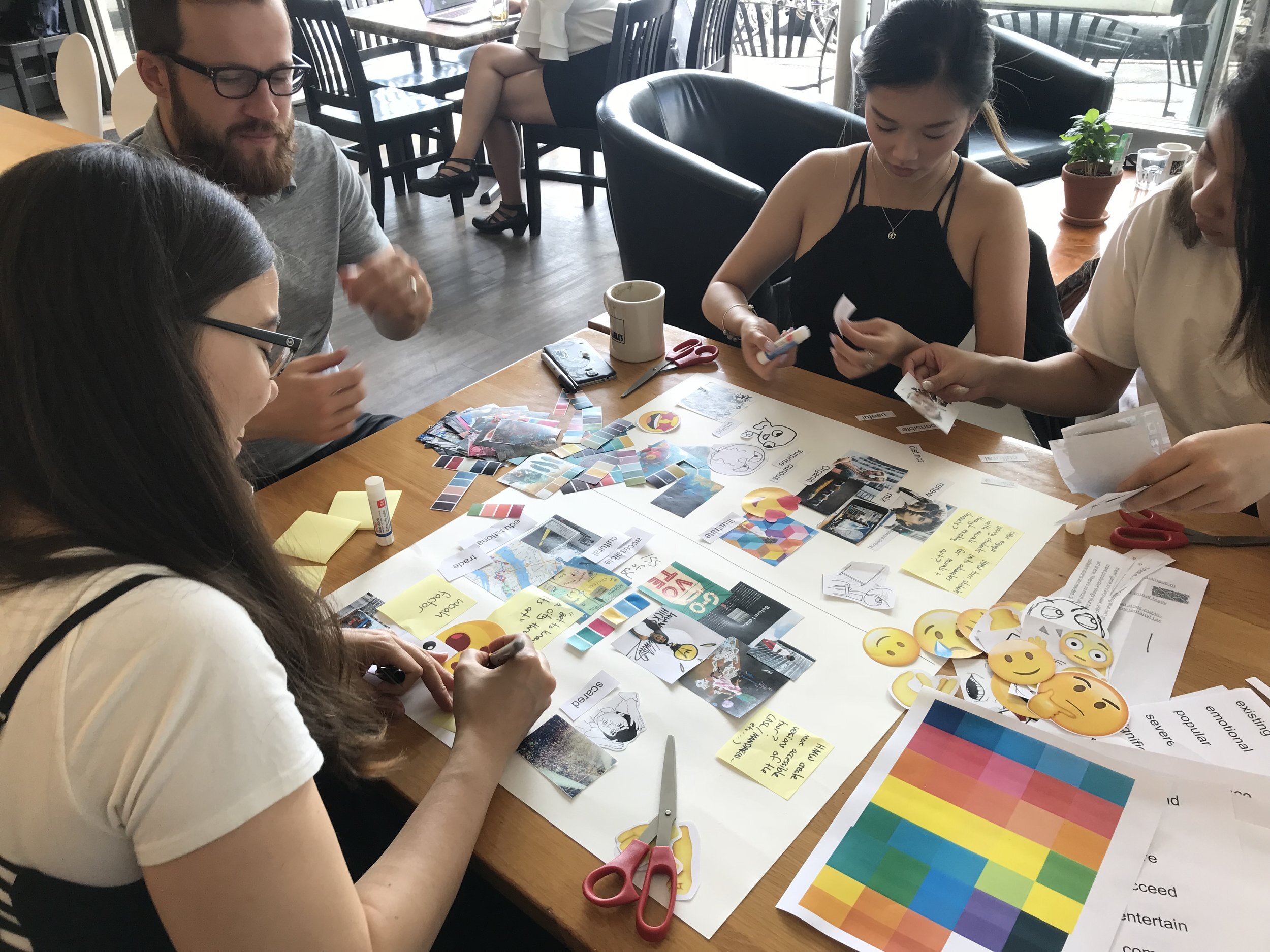
Promoting art and mural literacy in classrooms.
Local organization, Vancouver Mural Festival (VMF), was founded in 2016 with the mission of building relationships between people and cultures through art. Each year, VMF hosts a week-long festival that celebrates diversity in art to promote mural literacy* in the Lower Mainland. A partnership with VMF was established to identify business opportunities through various collaborative and immersive design research methods and to propose a feasible design.
Aligning with the VMF’s goal of promoting mural literacy*, my team and I designed an educational toolkit that engages middle grade students in various art activities and encourages them to experience art outside of the classroom.
*Mural literacy refers to one’s ability to engage with, interpret, and understand the differences the between murals, street, art, graffiti, and vandalism.
Project Type
Product Design
User Research
Content Strategy
Visual Design
Year
2018
Design Research Methodologies
This project was completed during a Design Research Methodologies course at Simon Fraser University. Collaborative research methods—including co-creation and user testing—were conducted for this project.

VMF Classroom Kit
Promoting art and mural literacy in classrooms.
Designed with middle grade (Grade 6-7) students and teachers in mind, the VMF classroom kit includes resources for art lesson planning, as well as memorabilia and incentives for student engagement. The overall appearance of the kit and its contents is designed after the works of a featured artist. This would give VMF the opportunity to update the kit annually while fostering long-term relationships with local school districts.
Inside the Kit
Instruction Booklet
In the kit, teachers are presented with an instruction booklet that outlines the purpose and value of the kit, which is to facilitate lesson planning and ultimately, encourage student engagement with art. The booklet also includes a detailed breakdown of the kit’s contents and how to leverage them during class.
Activity Cards
Designing for the BC Curriculum.
A set of Activity Cards were designed to aid teachers in integrating arts education into their classrooms. Each card is modelled after the BC Curriculum’s Arts Education structures for Grades 6 and 7; it contains a Big Idea—a general statement or principle representing what students are expected to understand—and Curricular Competencies which describe what students should be able to do by applying their learnings.
A detailed description of the activity is provided, including a set of guiding questions that teachers can use to prompt reflective thinking, as well as suggested materials and time needed for each activity. Finally, each card is colour-coded to differentiate the four Big Ideas within Arts Education.
Flexible content for students of every age.
In exploring how young students respond to art, teacher and educational psychologist, Dr. Jane Healy, explains that “Children are all very different in the pace at which they master abstractions... [It] develops gradually over the life span. And even little children can respond abstractly in some kinds of spontaneous ways.” This meant that regardless of age or educational level, children are able to understand, respond to, and express themselves in abstract ways.
Understanding this motivated our team to tailor content and language towards middle grade students. This would allow for flexibility and opportunities to increase or decrease the complexity of activities for older or younger students respectively.
VMF Mural Passport
Engaging art outside of the classroom.
The VMF Mural Passport was created to facilitate student engagement with local art by incentivizing visits to murals within the community. Comprised of a collection of murals to visit, the passport highlights each artist and their work with a short description, as well as a link to the artist’s social media page or portfolio—the purpose of which is to facilitate connections between artists and their community.
To promote mural literacy within arts education, each mural is accompanied by reflective questions for which students will receive a stamp upon completion. Complex words and art terminology are underlined and defined for students in the Vocabulary section found at the end of the Mural Passport. This allows students to expand their vocabulary whilst supporting English-Language Learner students.
Beyond the Kit
Digital Resources
Maximizing public engagement with art and murals.
To maximize engagement, we also proposed an openly accessible digital version of the educational resources and activities on the VMF website. The content and language for the educational activities would be adjusted to include individuals outside of the education sector. The existing photo gallery on the VMF website would also be elevated to become an informative guide that details the location of each mural as well as the artist’s statement.
Process & Insights
Formative Research
Identifying business and design opportunities.
To identify business and design opportunities, I conducted in-person and phone interviews with members of the VMF Executive Team, past mural artists, curators, and Mount Pleasant business owners. Through these conversations, I was able to define three major opportunity areas:
The process of acquiring walls for the murals
The week-long festival experience
The guided walking tour of murals
In order to support VMF in their commitment to promoting mural literacy, my team and I began with a focus on the 90-minute walking tour. With festival attendance rates increasing rapidly each year, ensuring a positive experience became a priority; However, a former volunteer tour guide revealed that limited available staff in addition to the amount of information one must learn to lead a tour has resulted in less frequent sessions that happen in larger groups. By studying the walking tour, my team and I were able to identify and address specific pain points with the potential to scale solutions to the overall festival experience.
Primary Research
Experiencing the walking tour as an attendee.
In order to gain a holistic understanding of the walking tour experience, several members of the team attended the tour. Along the way, significant pain points were identified and frictions outlined by the former tour guide were also validated. Altogether, these insights informed the creation of a detailed journey map of the walking tour experience (shown below).
Identifying key pain points in the walking tour experience.
Attendees felt both physically and mentally exhausted by the pace of the 90-minute tour and the amount of information being presented. For individuals with mobility issues, accessibility was especially concerning. After 90-minutes, the tour comes to an abrupt, awkward stop and lacks connection to the Festival.
Co-creation Workshop
In the third week of the project, my team and I held a co-creation workshop with VMF’s Director of Engagement. We validated initial assumptions and frictions and presented early concepts which included:
Mural Bot: Powered by Facebook Messenger and Artificial Intelligence, the Mural Bot would create and guide users through personalized tour routes based on their interests.
Mural Hunt: A dedicated mobile app experience involving multiple check-points, activities, and prize incentives would entice and facilitate engagement with the VMF, particularly for young and/or technology-motivated audiences,
Coming Soon: Leveraging projection mapping technology, residents would be able to visualize upcoming murals projected on the walls that they would inhabit.
Of these early concepts, the VMF Classroom Kit retains the characteristics of exploring murals on one's own terms (Mural Bot) and completing activities to receive prizes (Mural Hunt).
Co-creation Workshop Outcomes
Inspiring new design opportunities.
Through hands-on, idea-generation activities like graffiti wall and collages, new design opportunities emerged alongside more specific groups of interest; These included attendees with limited mobility, newcomers to Vancouver not fluent in English, and students and younger audiences. Students and younger audiences were identified as the target audience as this presented an opportunity for VMF to build new relationships within the education sector.
Concept Validation & User Testing
To measure the feasibility, viability, and desirability of the VMF Classroom Kit, my team and I prototyped and tested the kit with 3 teacher candidates from the University of British Columbia. Conducting a collaborative, think-aloud study of the kit, each teacher candidate was partnered up with a member of our team to go through the contents of the kit in detail.
In the first iteration of the Activity Cards (shown below), the teacher candidates collectively expressed concern for the language being very prescriptive and limiting. They added that prescriptive tones make it more difficult to engage students in deeper thinking and spark conversations. To address this, they suggested the use of a descriptive tone that would allow for teacher and student adaptations of the activities. Similarly, for the Mural Passport, we were encouraged to include reflective questions to prompt students to actively explore their own perceptions of each mural.
Example of a prescriptive tone: "Pair students up and get them to create a portrait that portrays who they think their partner is as a person."
Example of a descriptive tone: "In pairs, students will be creating a portrait of their partner that reflects their impressions of each other."



